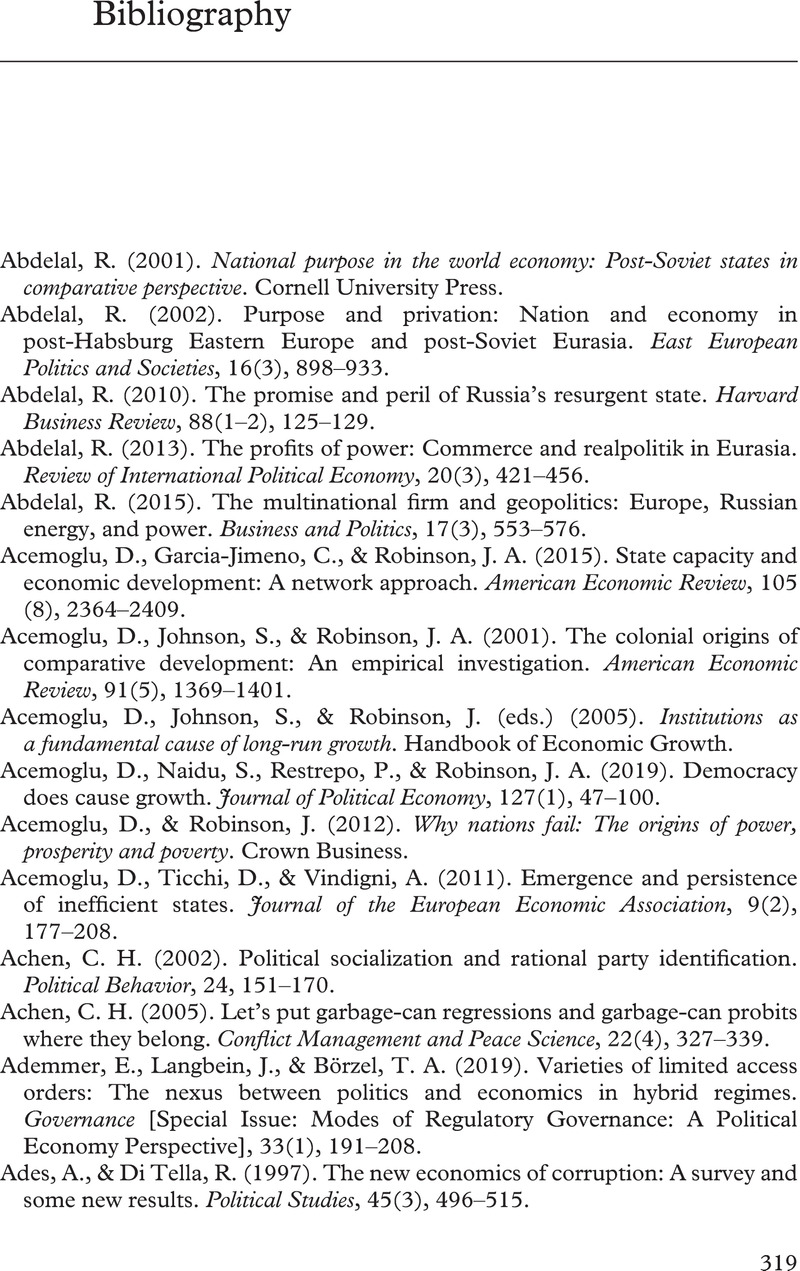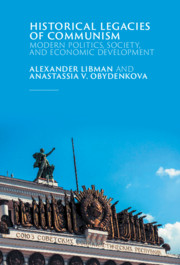Book contents
- Historical Legacies of Communism
- Historical Legacies of Communism
- Copyright page
- Dedication
- Contents
- Figures
- Maps
- Tables
- Acknowledgments
- Abbreviations
- 1 Introduction
- 2 The CPSU Legacy: Leninism or Clientelism?
- 3 Cultural Environment and Soviet Cinematography as a Legacy of the CPSU
- 4 Measuring CPSU Legacies
- 5 Democracy
- 6 Corruption
- 7 Inequality
- 8 Mortality
- 9 Attitudes Toward Migrants
- 10 Economic Development and Innovations
- 11 The Origin and Persistence of Legacies
- 12 Conclusion
- Bibliography
- Index
- References
Bibliography
Published online by Cambridge University Press: 27 January 2021
- Historical Legacies of Communism
- Historical Legacies of Communism
- Copyright page
- Dedication
- Contents
- Figures
- Maps
- Tables
- Acknowledgments
- Abbreviations
- 1 Introduction
- 2 The CPSU Legacy: Leninism or Clientelism?
- 3 Cultural Environment and Soviet Cinematography as a Legacy of the CPSU
- 4 Measuring CPSU Legacies
- 5 Democracy
- 6 Corruption
- 7 Inequality
- 8 Mortality
- 9 Attitudes Toward Migrants
- 10 Economic Development and Innovations
- 11 The Origin and Persistence of Legacies
- 12 Conclusion
- Bibliography
- Index
- References
Summary

- Type
- Chapter
- Information
- Historical Legacies of CommunismModern Politics, Society, and Economic Development, pp. 319 - 360Publisher: Cambridge University PressPrint publication year: 2021



